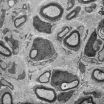(Press-News.org) Nationwide, more than one-quarter of hospital-based general practitioners who take over for patients' primary care doctors to manage inpatient care say their average patient load exceeds safe levels multiple times per month, according to a new Johns Hopkins study. Moreover, the study found that one in five of these physicians, known as hospitalists, reports that their workload puts patients at risk for serious complications, or even death.
The research, reported in JAMA Internal Medicine, comes as health care systems anticipate an influx of new patients generated by the Affordable Care Act over the next few years; as restrictions on resident-physicians limit their duty hours; and as one in three physicians is expected to retire or otherwise leave medicine over the next 10 years, cumulatively resulting in increased patient care needs coupled with stressed staffing demands.
"As perceived by physicians, workload issues have the significant potential to do harm and decrease quality," says study leader Henry J. Michtalik, M.D., M.P.H., M.H.S., an assistant professor in the Division of General Internal Medicine at the Johns Hopkins University School of Medicine. "It is the elephant in the room that cannot be ignored. We have to find that balance between safety, quality and efficiency."
The Johns Hopkins study comprised a survey of 890 hospitalists across the United States, 506 of whom responded. Twenty-two percent of the respondents reported ordering costly and potentially unnecessary tests, procedures or consults because they didn't have time to properly assess patients assigned to their care.
"If a hospitalist is short on time and a patient is having chest pains, for example, the doctor may be more likely to order additional tests, prescribe aspirin and call a cardiologist — all because there isn't adequate time to immediately and fully evaluate the patient," Michtalik says.
For the study, Michtalik, a hospitalist at The Johns Hopkins Hospital in Baltimore, and his colleagues electronically surveyed self-identified hospitalists enrolled in an online physician community, QuantiaMD.com. Of those who responded over the course of four weeks in November 2010, the average age was 38 years and more than half worked in community hospitals. Among other questions, physicians were asked to report what they felt was a safe number of patients to see in a typical shift. Most physicians reported that they could safely see 15 patients in a shift if they could focus 100 percent on clinical matters. When the average actual workload was compared to the perceived safe workload, 40 percent of physicians exceeded their own reported safe level.
Michtalik says that JHH's hospitalists typically stay below that number, while hospitalists at community hospitals often see more than 15 patients per shift.
"Hospitals need to evaluate workloads of attending physicians, create standards for safe levels of work and develop mechanisms to maintain workload at safe levels," he adds.
###The study was supported by National Institutes of Health grant T32 HP10025-17-00, the NIH/Johns Hopkins Institute for Clinical and Translational Research KL2 Award 5KL2RR025006 and the Johns Hopkins Hospitalist Scholars Program.
Other Johns Hopkins researchers involved in the study include Hsin-Chieh "Jessica" Yeh, Ph.D.; Peter J. Pronovost, M.D., Ph.D.; and Daniel J. Brotman, M.D.
For more information:
http://www.hopkinsmedicine.org/gim/faculty/Michtalik.html
Hospital patient loads often at unsafe levels, physician survey says
Hospitalists nationwide suggest daily workload may be adversely impacting the safety and quality of patient care
2013-01-29
ELSE PRESS RELEASES FROM THIS DATE:
Researchers find genes behind aggressive endometrial cancer
2013-01-29
New Haven, Conn. — In a major breakthrough for uterine serous carcinoma (USC) — a chemo-resistant, aggressive form of endometrial cancer, Yale researchers have defined the genetic landscape of USC tumors, findings that point to new treatment opportunities.
The collaborative team—which included researchers with expertise in gynecological cancer, genomics, and computational biology— identified a number of new genes that are frequently mutated in USC. The results of this comprehensive genetic analysis of USC are published in the Jan. 28 Proceedings of the National Academy ...
Slow-release 'jelly' delivers drugs better
2013-01-29
DURHAM, NC -- Duke University biomedical engineers have developed a new delivery system that overcomes the shortcomings of a promising class of peptide drugs – very small proteins – for treating diseases such as diabetes and cancer.
There are more than 40 peptide drugs approved for use in humans and more than 650 are being tested in clinical studies. One example is the hormone insulin, a peptide that regulates the metabolism of carbohydrates in the body and is used as a drug to treat diabetes.
Despite their effectiveness, peptide drugs cannot achieve their full potential ...
Public report national audit of percutaneous coronary interventional procedures 2011
2013-01-29
The 2011 annual report of the National Audit of Percutaneous Coronary Intervention (PCI) highlights the significant progress within hospitals to expand PCI services to treat more patients with acute coronary syndromes.
PCI mechanically improves blood flow to the heart and can be used to relieve the symptoms of angina, prevent and treat heart attacks. When used to treat heart attack patients, the procedure is called primary PCI. Commissioned and funded by the Healthcare Quality Improvement Partnership, the National Audit of PCI is clinically led by the British Cardiovascular ...
Cardiac disease linked to higher risk of mental impairment, Mayo Clinic finds
2013-01-29
ROCHESTER, Minn. -- Cardiac disease is associated with increased risk of mild cognitive impairment such as problems with language, thinking and judgment -- particularly among women with heart disease, a Mayo Clinic study shows. Known as nonamnestic because it doesn't include memory loss, this type of mild cognitive impairment may be a precursor to vascular and other non-Alzheimer's dementias, according to the findings published online Monday in JAMA Neurology.
Mild cognitive impairment is an important stage for early detection and intervention in dementia, says lead author, ...
New research will help shed light on role of Amazon forests in global carbon cycle
2013-01-29
The Earth's forests perform a well-known service to the planet, absorbing a great deal of the carbon dioxide pollution emitted into the atmosphere from human activities. But when trees are killed by natural disturbances, such as fire, drought or wind, their decay also releases carbon back into the atmosphere, making it critical to quantify tree mortality in order to understand the role of forests in the global climate system. Tropical old-growth forests may play a large role in this absorption service, yet tree mortality patterns for these forests are not well understood. ...
The tales teeth tell
2013-01-29
For more than two decades, scientists have relied on studies that linked juvenile primate tooth development with their weaning as a rough proxy for understanding similar developmental landmarks in the evolution of early humans. New research from Harvard, however, is challenging those conclusions by showing that tooth development and weaning aren't as closely related as previously thought.
Using a first-of-its-kind method, a team of researchers led by professors Tanya Smith and Richard Wrangham and Postdoctoral Fellow Zarin Machanda of Harvard's Department of Human Evolutionary ...
Glial cells assist in the repair of injured nerves
2013-01-29
This press release is available in German.
Unlike the brain and spinal cord, the peripheral nervous system has an astonishing capacity for regeneration following injury. Researchers at the Max Planck Institute of Experimental Medicine in Göttingen have discovered that, following nerve damage, peripheral glial cells produce the growth factor neuregulin1, which makes an important contribution to the regeneration of damaged nerves.
From their cell bodies to their terminals in muscle or skin, neuronal extensions or axons in the peripheral nervous system are surrounded ...
EARTH: Drinking toilet water
2013-01-29
Alexandria, VA – Would you drink water from a toilet? What if that water, once treated, was cleaner than what comes out of the faucet? Although the imagery isn't appealing, as climate change and population growth strain freshwater resources, such strategies are becoming more common around the world — and in the United States.
Over the last several decades, local and regional water shortages have become increasingly common. These shortages have led to increased friction over water resources. Technologies are currently being developed to help make wastewater recycling ...
1 in, 2 out: Simulating more efficient solar cells
2013-01-29
Using an exotic form of silicon could substantially improve the efficiency of solar cells, according to computer simulations by researchers at the University of California, Davis, and in Hungary. The work was published Jan. 25 in the journal Physical Review Letters.
Solar cells are based on the photoelectric effect: a photon, or particle of light, hits a silicon crystal and generates a negatively charged electron and a positively charged hole. Collecting those electron-hole pairs generates electric current.
Conventional solar cells generate one electron-hole pair ...
Study finds eating deep-fried food is associated with an increased risk of prostate cancer
2013-01-29
SEATTLE – Regular consumption of deep-fried foods such as French fries, fried chicken and doughnuts is associated with an increased risk of prostate cancer, and the effect appears to be slightly stronger with regard to more aggressive forms of the disease, according to a study by investigators at Fred Hutchinson Cancer Research Center.
Corresponding author Janet L. Stanford, Ph.D., and colleagues Marni Stott-Miller, Ph.D., a postdoctoral research fellow and Marian Neuhouser, Ph.D., all of the Hutchinson Center's Public Health Sciences Division, have published their findings ...
LAST 30 PRESS RELEASES:
Keck Medicine of USC names Christian Pass chief financial officer
Inflatable fabric robotic arm picks apples
MD Anderson and SOPHiA GENETICS announce strategic collaboration to accelerate AI-driven precision oncology
Oil residues can travel over 5,000 miles on ocean debris, study finds
Korea University researchers discover that cholesterol-lowering drug can overcome chemotherapy resistance in triple-negative breast cancer
Ushikuvirus: A newly discovered giant virus may offer clues to the origin of life
Boosting the cell’s own cleanup
Movement matters: Light activity led to better survival in diabetes, heart, kidney disease
Method developed to identify best treatment combinations for glioblastoma based on unique cellular targets
Self-guided behavioral app helps children with epilepsy sleep earlier
Higher consumption of food preservatives is associated with an increased risk of type 2 diabetes
NTU Singapore-led team captures first-ever ‘twitch’ of the eye’s night-vision cells as they detect light, paving the way for earlier detection of blindness-causing diseases
Global aviation emissions could be halved through maximising efficiency gains, new study shows
Fewer layovers, better-connected airports, more firm growth
Exposure to natural light improves metabolic health
As we age, immune cells protect the spinal cord
New expert guidance urges caution before surgery for patients with treatment-resistant constipation
Solar hydrogen can now be produced efficiently without the scarce metal platinum
Sleeping in on weekends may help boost teens’ mental health
Study: Teens use cellphones for an hour a day at school
After more than two years of war, Palestinian children are hungry, denied education and “like the living dead”
The untold story of life with Prader-Willi syndrome - according to the siblings who live it
How the parasite that ‘gave up sex’ found more hosts – and why its victory won’t last
When is it time to jump? The boiling frog problem of AI use in physics education
Twitter data reveals partisan divide in understanding why pollen season's getting worse
AI is quick but risky for updating old software
Revolutionizing biosecurity: new multi-omics framework to transform invasive species management
From ancient herb to modern medicine: new review unveils the multi-targeted healing potential of Borago officinalis
Building a global scientific community: Biological Diversity Journal announces dual recruitment of Editorial Board and Youth Editorial Board members
Microbes that break down antibiotics help protect ecosystems under drug pollution
[Press-News.org] Hospital patient loads often at unsafe levels, physician survey saysHospitalists nationwide suggest daily workload may be adversely impacting the safety and quality of patient care



